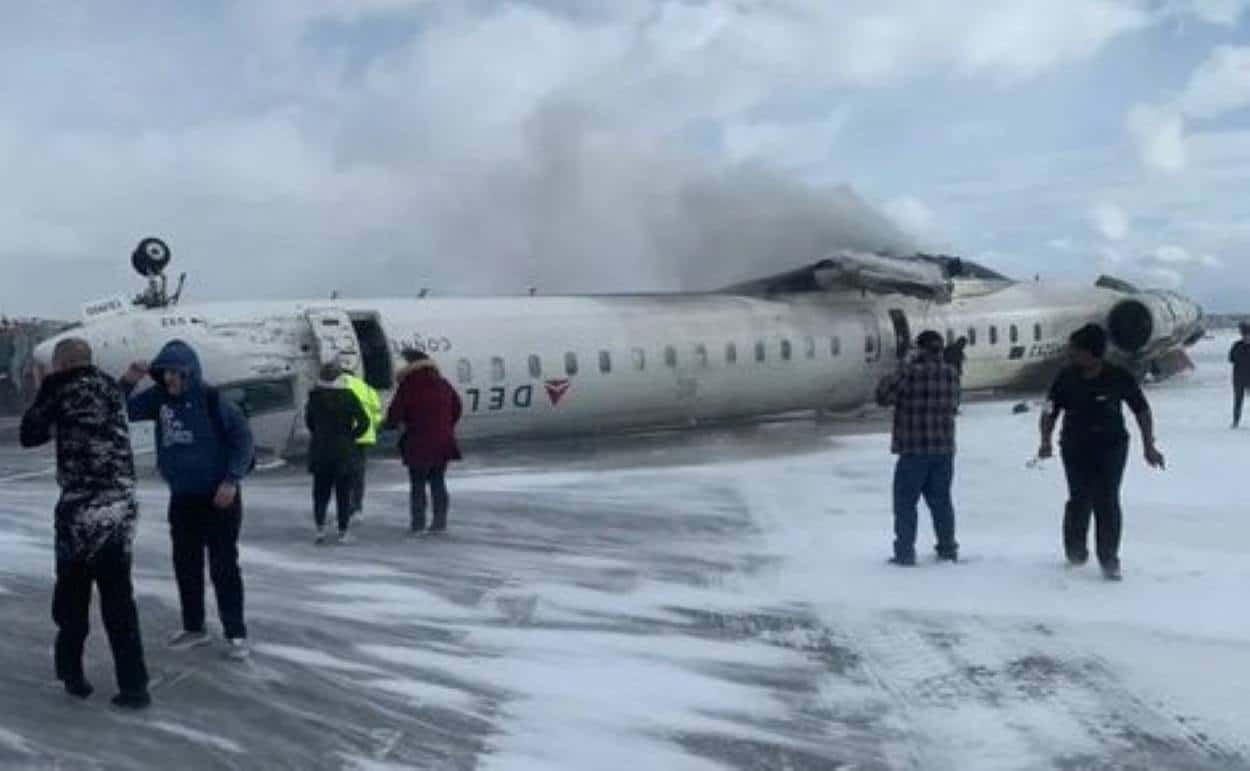A Delta Air Lines flight from Minneapolis to Toronto experienced a harrowing crash on Monday as it attempted to land at Toronto Pearson International Airport.
The CRJ900 twin-jet aircraft overturned and caught fire during the landing process. Miraculously, all 80 passengers aboard survived, though 21 sustained injuries, with most being released from the hospital by Tuesday morning.
This incident is the latest in a string of recent aviation tragedies, including a deadly midair collision near Washington, D.C., and a medevac crash in Philadelphia. President Donald Trump referred to these incidents as a “real tragedy” during a briefing, suggesting that government DEI (Diversity, Equity, and Inclusion) policies and employee mental health might have contributed to these accidents.
Investigation Details and Pilot Maneuvers
A critical observation from the Delta crash was the absence of the “flare” manoeuvre typically executed by pilots before landing. This technique involves lifting the nose of the plane to increase air resistance against the wings, aiding in a smoother and slower touchdown. The omission of this manoeuvre has led aviation experts to question the pilot’s actions during the landing attempt.
The crash has ignited a heated online debate about whether the pilot was a “DEI hire,” implying recruitment based on diversity criteria rather than qualifications. Delta Air Lines, known for its commitment to diversity, faced criticism from some quarters of social media. Users speculated that the pilot might have been selected under DEI policies, prioritizing demographic factors over merit.
However, Delta maintains a “skills-first” hiring approach, emphasizing candidates’ skills, background, and experience over their educational qualifications. The airline aims to close representation gaps while ensuring a skilled and equitable workforce.
Read: Online Speculation Ignites After Delta Airlines Plane Crash in Toronto
Experts noted that the Bombardier CRJ900 aircraft is built to endure hard landings, which likely facilitated the swift evacuation of passengers. Flight recordings indicated that air traffic control had cleared the flight for landing but had issued a caution about potential airflow issues due to another aircraft ahead. The exact cause of the crash remains under investigation.
While there has been no official confirmation about the pilot’s identity or hiring circumstances, the intense public discourse continues. The debate over DEI practices in aviation underscores a broader controversy, even as the focus should ideally remain on uncovering the crash’s causes and enhancing passenger safety.






